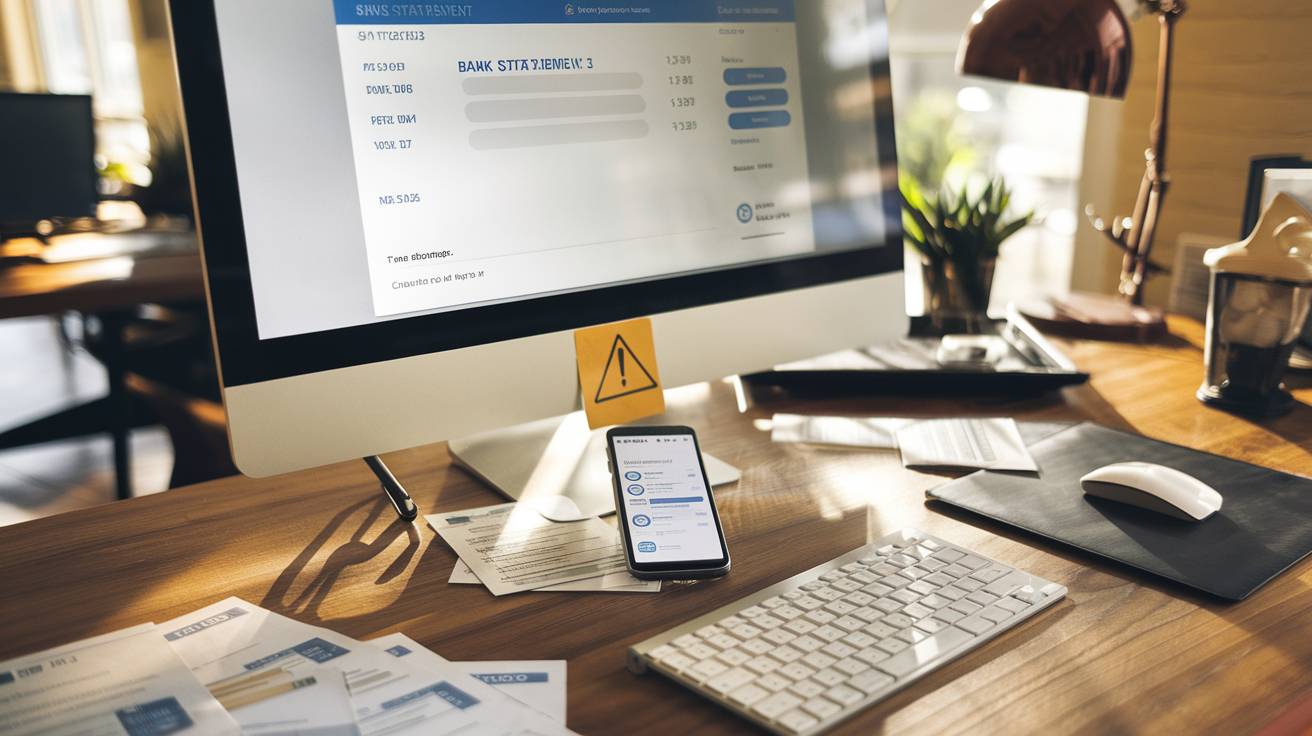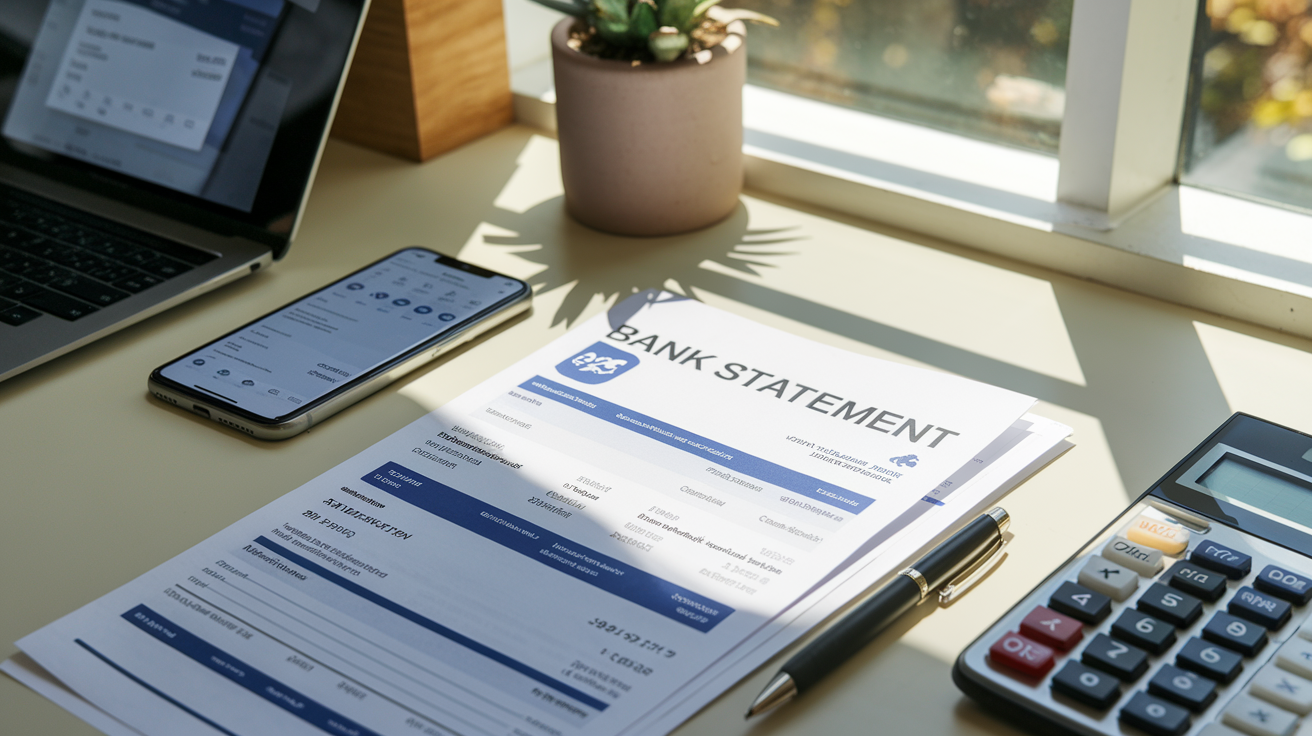Here’s a step-by-step process on how to spot fake bank statements. Applying for a loan can sometimes feel like you’re under a microscope,
particularly when it comes to your bank statements.
But what exactly are lenders looking for?
In this post, you’ll learn the ins and outs of bank statement verification.
I’ll guide you through each step with clarity and precision,
preparing you for a smoother loan application experience.
Get ready for some eye-opening revelations!
Verifying bank statements is a crucial step in the lending process. It ensures the financial stability of potential borrowers and protects lenders from fraudulent activities. Accepting fake documents can lead to significant financial losses, damage to reputation, and legal consequences. This guide aims to equip lenders with the knowledge and tools to effectively detect fake bank statements.
Understanding how to spot fake bank statements
Key Elements of Genuine Bank Statements

- Account holder’s name and address
- Account number
- Bank’s name and logo
- Transaction dates and descriptions
- Opening and closing balances
- Page numbers and statement period
Common Formats and Security Features
- Watermarks
- Microprinting
- Unique font styles
- Color-shifting ink
- Holographic images
Many banks incorporate specific security features that are difficult to replicate, making it harder for fraudsters to produce convincing fake statements.
Initial Verification Steps
Visual Inspection for Red Flags
- Check for blurred text or images
- Look for inconsistent font styles or sizes
- Examine the quality of the bank’s logo
- Verify that all information aligns properly
Checking for Alterations
- Compare the document with a known genuine statement
- Look for signs of digital manipulation, such as pixelation around text
- Check for inconsistencies in line spacing or margins
Digital Verification Techniques
Software for Detecting Document Manipulation

- Use of metadata analysis tools
- Implementation of machine learning algorithms for pattern recognition
- Optical Character Recognition (OCR) for text verification
Electronic Authorization of Bank Statements
- Direct integration with bank APIs for real-time verification
- Use of secure portals for statement uploads
- Implementation of two-factor authentication for document submission
Analyzing Transaction Patterns
Identifying Inconsistencies
- Compare opening and closing balances with transaction totals
- Look for rounded transaction amounts, which are often signs of manipulation
- Check for duplicate transactions or unrealistic payment frequencies
Regular vs. Irregular Transaction Activities
- Assess the consistency of regular payments like salaries or rent
- Look for unexplained large deposits or withdrawals
- Compare transaction patterns with the borrower’s stated income and expenses
Collaborating with Banks
Direct Communication with Banks

- Establish relationships with bank verification departments
- Use secure channels for requesting statement confirmations
- Understand each bank’s specific verification processes and timelines
Third-Party Verification Services
- Explore reputable verification service providers
- Understand the scope and limitations of third-party verifications
- Implement a system to track and record all verification attempts
Legal Considerations
Legal Implications of Fake Documents
- Familiarize yourself with relevant fraud laws and regulations
- Understand the difference between intentional fraud and unintentional errors
- Develop a protocol for reporting suspected fraudulent activities to authorities
Responsibilities and Liabilities of Lenders
- Implement and document due diligence processes
- Train staff on the legal aspects of document verification
- Maintain clear records of all verification steps taken
Case Studies
Real-Life Scenarios
- A lender detected a fake statement when they noticed inconsistent transaction dates that didn’t align with the bank’s known statement cycles.
- Another case involved a borrower who submitted a statement with a perfect balance history, raising suspicions that led to the discovery of digitally altered figures.
Lessons Learned and Best Practices
- Always cross-reference multiple documents
- Implement a multi-step verification process
- Regularly update verification procedures to keep up with new fraud techniques
Conclusion

Rigorous verification of bank statements is essential for protecting lenders and maintaining the integrity of the financial system. By implementing a comprehensive approach that combines visual inspection, digital tools, and collaboration with banks, lenders can significantly reduce their exposure to fraudulent activities.
Further Resources
- [Bank Statement Verification Best Practices Guide]
- [Financial Industry Regulatory Authority (FINRA) – Anti-Money Laundering]
- [Association of Certified Fraud Examiners – Document Examination Resources]
FAQs
Q: What are the typical indicators of fake bank statements?
Q: What are typical indicators that there might be a fraudulent check involved?
Q: What’s the best way for lenders to verify bank statements?
A: Lenders can do so by contacting the issuing bank, examining for security features and utilizing verification services or software. Statements generated by Proofofstatement AI can go through the verification process.
Q: What are some warning signs of a phony bank statement?
These are red flags, and occur because the transactions can be odd and inconsistent with the account balances and the quality of the documents is poor.
Q: Is there anything at all lenders can do to stop fake bank statements with the use of technology?
A: Yes, lenders may use special software and tools to catch false bank statements, like document verification and authentication services.
Q: What happens if I agree to accept replicas of bank statements?
A: There are several potential risks in accepting fictional bank statements, including losses, reputational risk and regulatory fines.
Q: So how can lenders guard against fake bank statement fraud?
A: Lenders can guard against fraud by having strong verification procedures, training personnel to spot phony documents, and verifying bank statements through technology.





